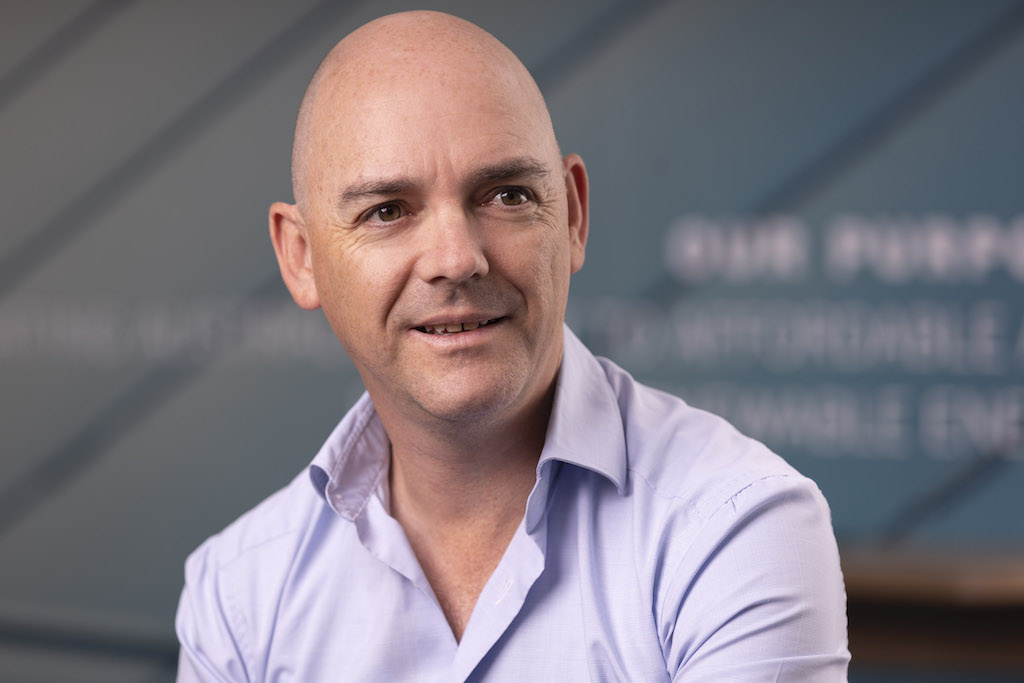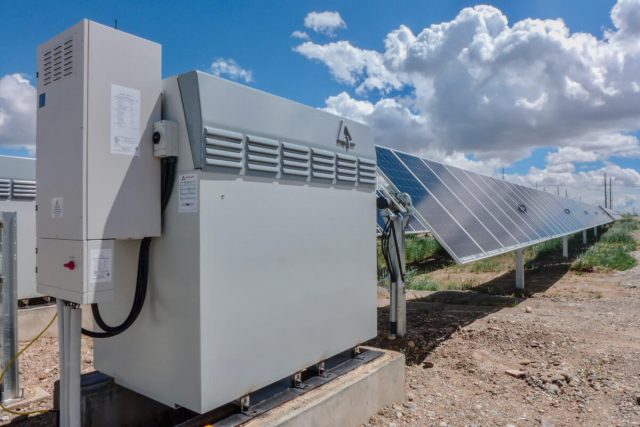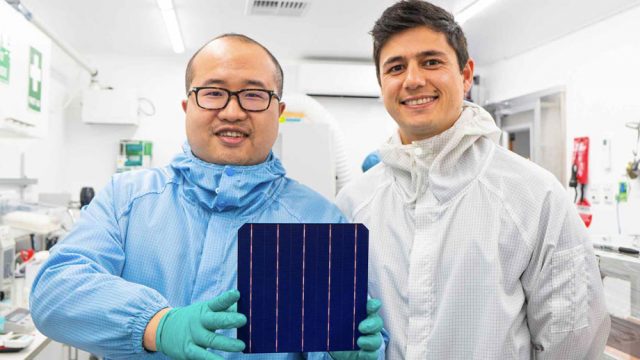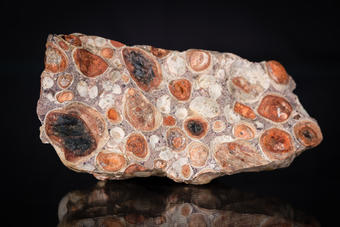Darren Miller: Investing in the building blocks for net zero
ARENA CEO Darren Miller recently launched the agency’s new investment plan, explaining that Australia is blessed with all the ingredients needed to succeed in the transition to net zero emissions.

In this adapted version of his speech from the launch, he says these include an abundance of iron ore, bauxite, copper, lithium, cobalt and nickel — the building blocks for the solar panels, wind turbines, batteries and electric vehicles that are needed for our net zero future.
Australia is also blessed with an abundance of land, sun and wind — the other raw ingredients that are needed for us to deploy the technologies that will transform our energy systems.
So abundant are our natural resources that not only can we solve our own emissions challenge, we have the opportunity to supply the world with a significant portion of the low or zero emissions energy products that it needs.
NEW – Darren Miller on the future of hydrogen
We also have all the skills, experience and trusted trading relationships that will be crucial if we are to execute on this potential and be a major player in the future net zero energy system, just as we are today in a world that is still dominated by fossil fuels.
What we lack though is the most valuable commodity of all — time itself. We are running out of time to make the changes needed to avoid the worst impacts of climate change. And we need to act quickly and decisively if we are to take advantage of the immense economic opportunities that the shift to net zero presents.
Our journey so far
ARENA was established nine years ago with the goal of improving the competitiveness of renewable energy technologies and increasing the supply of renewable energy in Australia.
To date, we have committed almost $1.8 billion to over 600 projects throughout Australia, and have drawn in more than three dollars of third-party funding for every dollar invested by the Commonwealth.
Through our funding and knowledge sharing, we have advanced the technical and commercial readiness of key renewable energy technologies including solar photovoltaics, lithium-ion batteries, distributed energy resources, green hydrogen production, electric vehicle charging and many others.
The International Energy Agency stated recently that solar PV is now the cheapest source of electricity in history and this is in no small part due to the important work done right here in Australia and funded by ARENA.
Led by Professor Martin Green and countless others, Australian researchers have led the world in solar photovoltaic research for decades. The PERC technology invented and perfected in the labs of our universities is now deployed in over 80% of solar modules produced today.
Just this week, Sundrive, an Australian start-up run by two UNSW graduates, and supported by ARENA, announced that they have broken the world efficiency record for a full-area commercial-size silicon solar cell.
With almost 25% of households having installed solar, Australia leads the world in its uptake of rooftop solar. And the last few years have seen increasing amounts of large-scale solar and wind committed and deployed throughout Australia.
Last year the Government released the first Low Emissions Technology Statement and allocated an additional $1.62 billion to ARENA to invest over the next 10 years on the next generation of low emissions technologies.
As we come to the end of our legislated funding and start to commit our new funds we have taken the time to assess what emissions reduction technologies and themes most need our support, which we have prioritised in our new Investment Plan.
Our mission
ARENA’s mission for the years ahead will support the global transition to net zero emissions by accelerating the pace of pre-commercial innovation. Importantly, we want to ensure the shift will be to the benefit of Australian businesses, households, workers and the environment.
Our mission has three key elements.
Firstly, our ambition – and the lens through which we assess our potential impact – is global. Australia’s domestic emissions, at 500 Mt CO2e per annum, are around 1% of global emissions. We are responsible for getting these emissions to net zero, however, we are also a major exporter of energy products, most notably coal and gas, where the bulk of the emissions generated occur overseas.
As the world seeks to decarbonise, low emissions alternatives will be sought, and we have the opportunity to be a major exporter of renewable energy and low emissions technology.
We must look towards the future and assess what types of products and services the world needs in its journey to net zero. Australian research and development and the deployment, at scale, of solar, wind, hydrogen and low emissions products, represent an enormous export opportunity.
Secondly, technology and commercial innovation is key to unlocking this opportunity. We must reduce the costs — and increase the capabilities — of renewable energy and low emissions technologies so that they outcompete the incumbent technologies throughout the whole economy.
This idea of acceleration is fundamental to ARENA’s mission. Australia could sit back and wait for the world to develop the solutions needed. But we choose to lean in and lead, to make things happen faster and position Australia for success.
In doing so we will see our efforts benefiting Australian industry, communities, households and individuals. The benefits will be in the form of cheaper energy, new jobs, new businesses, new forms of exports, and of course through reduced emissions and a stable climate, as we join with the rest of the world to achieve net zero in the decades ahead.
Our priorities
We are choosing to invest in three key areas — the electricity transition, clean hydrogen and low emissions metals. We will also deliver the budget programs for which we received $193 million of funding in last year’s Federal Budget, and we will explore opportunities to support new areas for ARENA such as carbon capture and storage and soil carbon technologies.
These themes have been chosen because of their importance in the global transition to net zero, their importance for Australia, and where ARENA’s unique skills and funding model are best suited to making a difference.
Electricity
Electricity is the first, and in some ways, the most important sector to decarbonise. It is first because we know what the solution is. And we are well on our way to replacing fossil fuels with renewable energy from solar and wind.
Currently around one-third of Australia’s greenhouse gas emissions come from the electricity sector and so it’s important due its carbon footprint.
It’s also important because electricity is an extremely efficient form of energy and a realistic solution for many end uses like heating and cooling our buildings, hot water, cooking, and transport.
Natural gas, diesel and petrol can all be replaced with electricity for these end uses, and so electricity is a key pathway to unlock emissions reductions across the economy.
Renewable energy now makes up over 25% of annual supply in the National Electricity Market. Solar and wind generation are low cost and mature technologies and we now need to deploy these technologies at scale and at pace as we head towards a 100% renewable grid.
But as we attempt to increase the penetration of renewables a number of challenges emerge if we are to retain a low cost and highly reliable system. It is these challenges that ARENA is focused on.
Optimising renewable electricity
We are focused on optimising the integration of large-scale renewable energy into the electricity system.
Solar and wind have different operating characteristics than traditional generation from coal, gas and hydro. There are technical, commercial and regulatory challenges to be solved if we are to operate our system with a very high share of renewables.
Within this theme of integration, we are particularly interested in the role that advanced inverters can play in keeping the system operating safely and securely, and we are working closely with the likes of AEMO, industry bodies and project developers to trial and perfect this technology.
Cost effective storage
We need to solve the challenge of cost effective energy storage. Solar and wind are by their nature variable. They do not necessarily produce electricity when it is needed and so our future system needs a lot more storage to absorb this low cost renewable energy when it is available and dispatch that energy to our homes, businesses and industries when it is needed.
ARENA is looking to support a wide variety of storage technologies. Lithium-ion batteries continue to make good progress for short duration dispatchable energy, but other prospective technologies like flow batteries, pumped hydro, thermal storage, compressed air and new electrochemical technologies may all have an important role to play.

We see it as ARENA’s job to create options for the future and so we’re looking to progress a range of technologies which together can solve the energy storage challenge that is coming.
Demand flexibility
We are looking to support projects that demonstrate the benefits of demand flexibility, by shifting when we use electricity to when supply is available. Our current electricity system largely takes demand as a given and supply is required to respond to the peaks and troughs in this demand profile.
Our future system would benefit if demand could instead adapt to require energy when solar and wind energy are available (and when electricity is cheapest and most abundant).
We are interested in a range of novel flexible demand options, including managed charging of electric vehicles (EVs), coordination of distributed energy resources, flexible operation of hydrogen electrolysers, and other load shifting technologies in industrial, commercial and residential settings
Ultra-low cost generation
Finally, within our electricity priority, we want to support innovation that can deliver ultra-low cost generation.
Solar and wind are now mature technologies that can deliver bulk energy at costs low enough to justify their deployment at scale. However, many of the harder-to-abate sectors need electricity at even cheaper rates than is possible with today’s technology.
In particular, the production of low cost green hydrogen will require renewable electricity at around half of current costs to achieve the “H2 under $2” goal that the Commonwealth Government has set.
For this reason, ARENA is focusing on step change innovations in solar PV. We are aiming for 30% module efficiency up from around 22% in today’s commercially available and widely used modules.
We want to see the installed cost of large-scale solar come down from over $1 per Watt today to around 30 cents per Watt in the future, which represents a 70% cost reduction. And we want to see all of this happen by 2030.

If we can achieve these targets then solar will be literally dirt cheap — perhaps as low at $15 per MWh — representing a significant overall cost reduction from today’s levels of at least $50 per MWh.
We are calling our goal “Solar 30 30 30” — 30% module efficiency, at 30c per Watt installed, by 2030 — and we are asking researchers and industry to get behind this target to drive this important technology to the next level.
Hydrogen
ARENA has led the push into renewable hydrogen, committing $60 million to around 30 hydrogen projects and in May announcing another $103 million to our three chosen large-scale electrolyser projects. And we’re not done yet.
Clean hydrogen is an emerging solution for end uses that are not suited to electrification.
Hydrogen, and its derivatives such as ammonia, can be combusted to produce heat, used as a chemical feedstock, stored for long periods and transported long distances.
Clean hydrogen is viewed as a key enabler of industrial decarbonisation including in the manufacturing of green steel and it represents a potentially significant export opportunity to countries like Japan and South Korea which have firm net zero targets but lack the capacity to produce all the renewable energy their economies need.
Low emissions metals
In recent years we have supported industry to reduce emissions. We are now sharpening our focus to accelerate the decarbonisation of the steel and aluminium industries.
The production of steel and aluminium is highly energy and emissions intensive, accounting for around 10% of global emissions. Australia is a major exporter of iron ore, bauxite and alumina — the minerals that go into producing steel and aluminium — and we are keenly interested in the decarbonisation pathways these two products will take.

In both cases we are looking to support research and development, and demonstration and deployment projects, throughout the value chain — from the mines, to the refineries where the ores are upgraded, to the smelters and factories where the end products are produced.
Exploring other areas
Beyond our focus on the key areas of electricity, hydrogen and low emissions metals, we are investigating opportunities in carbon capture and storage and soil carbon technologies.
Capturing emissions from industrial processes and taking carbon out of the atmosphere will become increasingly important as we seek to achieve net zero. In fact, the whole idea of net zero implies that it will be hard to achieve zero emissions in an absolute sense.
These areas are new for ARENA and we’ll be consulting with industry and researchers to develop our approach to supporting projects.
Conclusion
Getting to net zero in the decades ahead will no doubt be a big challenge. But I would argue that net zero presents an incredible opportunity for Australia to succeed in a future decarbonised world, just as it has in the age of fossil fuels.
To succeed we must accelerate the deployment of the things we have answers for. Solar, wind, lithium-ion batteries and EVs — these are all proven and available technologies.
Costs will continue to come down and integration challenges need to be solved as we progress, but nothing should stand in the way of these technologies being deployed at scale and at pace.
There are still technologies and sectors where decarbonisation will be hard and expensive. For example:
- the commercialisation of clean hydrogen
- the production of green steel and aluminium
- solving long distance and heavy transport
- reducing methane emissions, and
- manufacturing zero carbon plastics and cement.
This will all take longer and be costly. Solving these areas will require ingenuity and investment, collaboration and commitment.
But this is where the opportunity lies for Australia to use its vast land mass and excellent solar and wind resources to be a supplier of renewable energy to the world, and ARENA’s strategic priorities have been designed to capitalise on this opportunity.
We must act with urgency to take advantage of the immense opportunity to lead the way towards net zero.
LIKE THIS STORY? SIGN UP TO OUR NEWSLETTER

ARENA